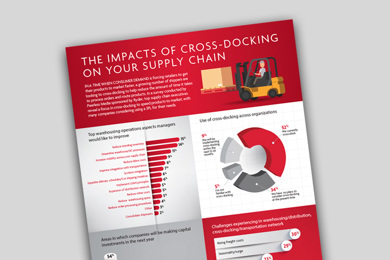Cross docking enables companies to streamline their distribution process by minimizing or eliminating the need for long-term storage. Products received from suppliers are directly transferred to outbound transportation vehicles, reducing handling and storage time. This results in faster delivery to customers, reducing lead times and improving overall efficiency.
By bypassing long-term storage, companies can significantly reduce inventory holding costs. Cross docking allows for a more "just-in-time" approach, where products are received and immediately shipped out, reducing the need for warehousing and associated expenses such as storage space, labor, and inventory management.
Cross docking helps optimize order fulfillment by consolidating and sorting products based on customer orders. This allows for efficient picking and packing, enabling companies to quickly assemble customer orders and ship them directly to the intended destinations. It enhances accuracy and speed in order processing, leading to higher customer satisfaction levels.
Cross docking facilitates agile supply chain management. It enables companies to respond quickly to changes in demand, market conditions, or customer preferences. By eliminating intermediate storage, companies can quickly adapt their distribution strategies, reroute products, and respond to fluctuations in demand patterns, reducing lead times and increasing flexibility.
Cross docking minimizes transportation costs by optimizing load consolidation. By combining multiple shipments into a single outbound truck, companies can maximize the utilization of transportation vehicles, reduce the number of trips, and lower associated fuel costs. It also helps in optimizing route planning and reducing empty miles, leading to significant cost savings.
Cross docking is particularly beneficial for industries dealing with perishable goods, such as fresh produce, dairy products, or flowers. By minimizing storage time, these goods can be delivered to the market faster, preserving their freshness and quality.
It's important to note that while cross docking offers numerous benefits, its successful implementation requires efficient coordination, strong supplier relationships, and effective logistics management. Companies must carefully assess their specific supply chain requirements and operational capabilities to determine if cross docking is the right strategy for them and if they should outsource to a third party logistics (3PL) provider.




